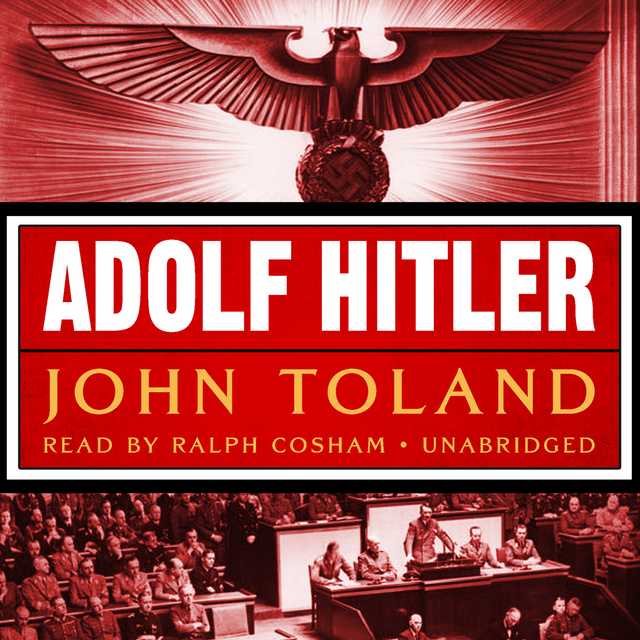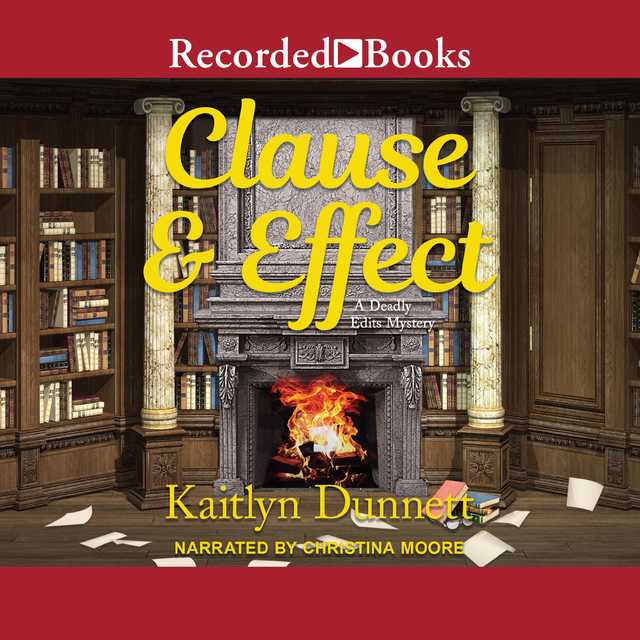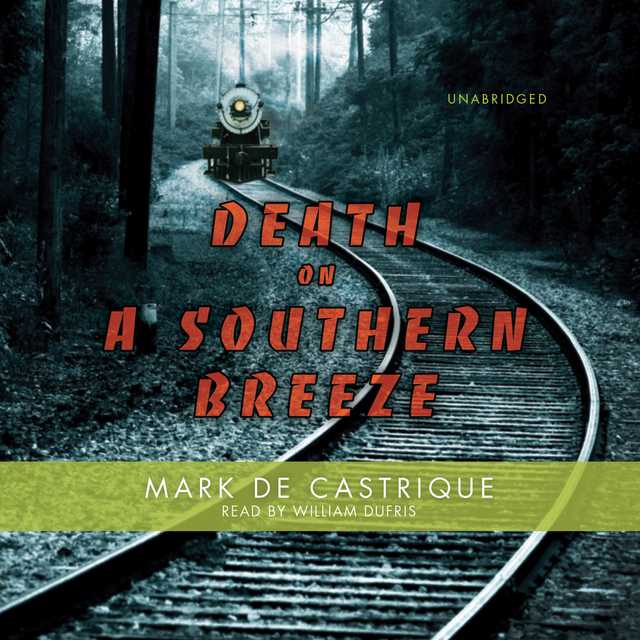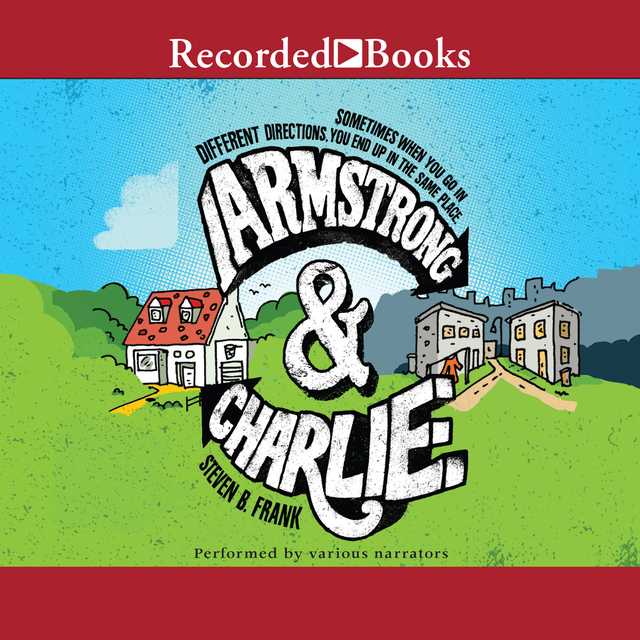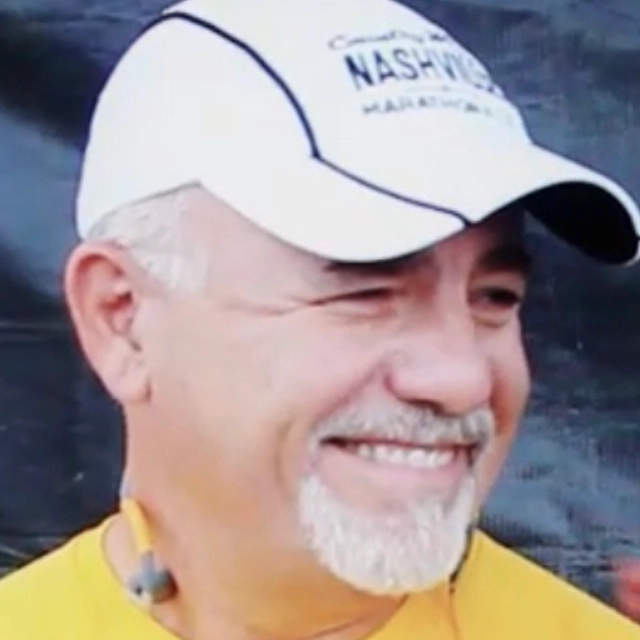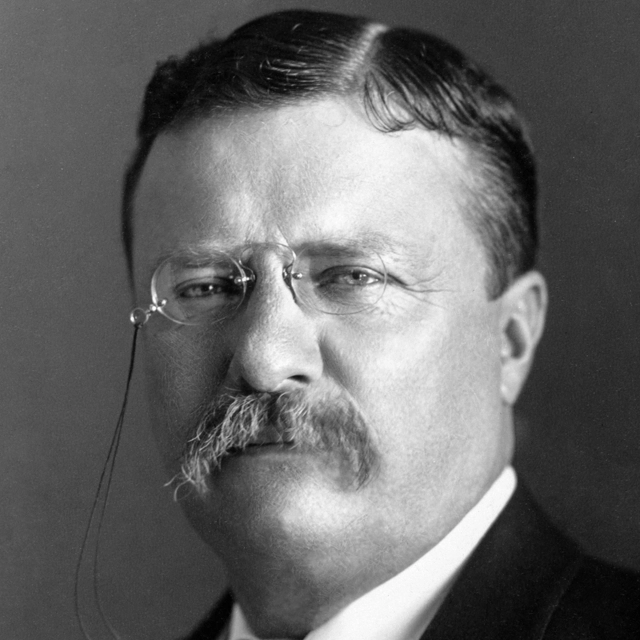The Great Halifax Explosion Audiobook Summary
From New York Times bestselling author John U. Bacon, a gripping narrative history of the largest manmade detonation prior to Hiroshima: in 1917 a ship laden with the most explosives ever packed on a vessel sailed out of Brooklyn’s harbor for the battlegrounds of World War I; when it stopped in Halifax, Nova Scotia, an extraordinary disaster awaited. . . .
On Monday, December 3, 1917, the French freighter SS Mont-Blanc set sail from Brooklyn carrying the largest cache of explosives ever loaded onto a ship, including 2,300 tons of picric acid, an unstable, poisonous chemical more powerful than TNT. The U.S. had just recently entered World War I, and the ordnance was bound for the battlefields of France, to help the Allies break the grueling stalemate that had protracted the fighting for nearly four demoralizing years. The explosives were so dangerous that Captain Aime Le Medec took unprecedented safety measures, including banning the crew from smoking, lighting matches, or even touching a drop of liquor.
Sailing north, the Mont-Blanc faced deadly danger, enduring a terrifying snowstorm off the coast of Maine and evading stealthy enemy U-boats hunting the waters of the Atlantic. But it was in Nova Scotia that an extraordinary disaster awaited. As the Mont-Blanc waited to dock in Halifax, it was struck by a Norwegian relief ship, the Imo, charging out of port. A small fire on the freighter’s deck caused by the impact ignited the explosives below, resulting in a horrific blast that, in one fifteenth of a second, leveled 325 acres of Halifax–killing more than 1,000 people and wounding 9,000 more.
In this definitive account, Bacon combines research and eyewitness accounts to re-create the tragedy and its aftermath, including the international effort to rebuild the devastated port city. As he brings to light one of the most dramatic incidents of the twentieth century, Bacon explores the long shadow this first “weapon of mass destruction” would cast on the future of nuclear warfare– crucial insights and understanding relevant to us today.
Other Top Audiobooks
The Great Halifax Explosion Audiobook Narrator
Johnny Heller is the narrator of The Great Halifax Explosion audiobook that was written by John U. Bacon
About the Author(s) of The Great Halifax Explosion
John U. Bacon is the author of The Great Halifax Explosion
More From the Same
- Author : John U. Bacon
- CIRQUE DU SOLEIL® The Spark
- Overtime
- Endzone
- The Greatest Comeback
- Let Them Lead
- Publisher : HarperAudio
- Abraham
- American Gods [TV Tie-In]
- Dead Ringer
- House of Sand and Fog
- Prey
The Great Halifax Explosion Full Details
| Narrator | Johnny Heller |
| Length | 10 hours 38 minutes |
| Author | John U. Bacon |
| Category | |
| Publisher | HarperAudio |
| Release date | November 07, 2017 |
| ISBN | 9780062695758 |
Additional info
The publisher of the The Great Halifax Explosion is HarperAudio. The imprint is HarperAudio. It is supplied by HarperAudio. The ISBN-13 is 9780062695758.
Global Availability
This book is only available in the United States.
Goodreads Reviews
Truman32
February 06, 2018
This past November, a 53-foot-tall white spruce Christmas tree was chopped down in Nova Scotia by burly Canadian lumberjacks, their beards thick, curly and smelling vaguely of maple syrup, and then shipped down to Boston for their annual holiday lighting ceremony on Boston Common. This gifting of a coniferous evergreen has occurred every year since 1971. Why? Surely Boston should be able to afford their own Christmas trees. And if the expense is too great, shouldn’t the smarty-pants at Harvard, MIT or Tufts be able to genetically create a super New England Spruce?John U. Bacon’s historical telling, The Great Halifax Explosion, shines a light on this explaining that this needle-covered gift is a thanks for the Boston response to one of the most awful and damaging man-made disasters ever. In 1917 World War 1 was in full swing, and the freighter Mont-Blanc loaded down with six million pounds of American-made high explosives was slowly pulling into the harbor town of Halifax, Nova Scotia. They would meet up with a convoy of other ships and then head off to the bloodstained trenches of Europe to drop off these much-needed munitions. Unfortunately while in the harbor, the Mont-Blanc smashed into another ship. The crew had moments to decide what to do: turning their flaming float-bomb around back out to sea, effectively sacrificing their lives to save the thousands of Halifax civilians (many women and children), or jump into their escape boats and row like they were in the Olympics going for the gold in the quad sculls event. They choose the lifeboats and as a result this burning and quickly deserted freighter floated gently into the Halifax docks where it eventually exploded. The force from this detonation was unlike anything ever experienced—second only to the atomic bombs dropped on Japan in World War Two. Needless to say, Halifax was demolished. The devastation was on the level of thousands of inebriated Philadelphia Eagles football fans celebrating a Super bowl win. But in Halifax not only were there charred ruins of smoldering Wawa convenience stores, but almost all houses and buildings were leveled. Over 2,000 were killed. 9,000 injured. 25,000 homeless. A mushroom cloud hung over the city before dropping black oil and pieces of glass, metal and other shrapnel on the survivors. A 35-foot tsunami flooded in. But Bacon’s The Great Halifax Explosion is not so much about the grisly and heartbreaking results from this catastrophe—though with many facial and eye injuries from flying glass it is plenty gruesome, but the generosity and valor of the survivors and the people across Canada and the United States that stepped up and offered compassionate assistance. Almost without fail, folks—including the New Englanders in Boston nobly jumped to help.Bacon writes a moving and inspiring book. He gets us to invest in and care about a cast of Halifax citizens before the explosion. We already know what is going to happen and we wonder who is going to make it. At one moment I had to moan to my wife, “oh no, there’s an orphanage right by the dock! Run young orphans, for the love of all that is holy run! RUN!!” After the explosion Bacon let’s us know the ordeals and the heroism of the folks who escape with their lives. It all reads like a fictional adventure tale. And despite some extraneous facts (Bacon wants to really shove it all in. He even spends time talking about Babe Ruth and Yankee stadium for some unknown reason) and a little trouble keeping his rather large cast straight, this was an excellent read.
Judith
May 29, 2019
This account of the horrific explosion of 6 million pounds of high explosives in Halifax, Canada’s harbor is only one of the stories in this book. It’s also about the shaky American-Canadian relationships from the time of the French and Indian war to the end of WWI. It explains Canada’s important role in supplying the Allies in WWI and the importance of their very deep marina. It reminds us of Halifax’s role in recovering and burying bodies from the sinking of the Titanic. But the sheer magnitude of the devastation from the explosion will surely bring tears to your eyes. So many dead, so many children lost or orphaned, so many people maimed or homeless and so many drowned from the resulting tidal wave. A lot is made of Boston’s assistance, and to their credit, the city of Boston contributed millions of dollars in aid and sent a force of medical personnel within three days of the explosion. But, I was glad the author clarified that the local and surrounding Halifax medical responders (doctors, surgeons, ophthalmologists, nurses, first aiders, ambulance drivers, morticians, veterinarians) responded immediately and went many days without much sleep and stopping only for nourishment. It’s a miracle anyone survived and was able to go on in the midst of such tragedy. Rounded up from 3.5 stars.
Candie
June 09, 2020
I really, really enjoyed this book. I learned so much and found it very interesting. It's not just about the explosion but it also gives a little history on Halifax, Nova Scotia, Canada, the US, WWI and even a bit of world history. There was just the right mix of facts and personal stories to make this extremely readable. It is however, a very descriptive and heartbreaking story. The horrors that people had to live through during this are just incomprehensible. Reading some parts of it were very intense. I cried and cried listening to the people's stories. It's hard to comprehend any of that even being real. I knew what was going to happen but I was still on the edge of my seat hoping the ship might make it. The author did a very good job of writing with a strong sense of compassion and humanity. He really showed how hard it would be for the victims and their families and how hard it would be to be making split second decisions during such tragic situations. He showed all the pros and cons of the decisions made so that it was understandable how they were made. Nobody knows what they would do or what their bodies and minds would even be capable of doing in a situation like this, until they have actually lived through it. It's so easy to look back and say all of the different things that could have been done to avoid it or save more lives once it was clear it was going to happen, but it's hard to say what anybody would do in such a life threatening situation. It was probably so terrifying. It was also an amazing portrayal of how tragedy can really bring out the caring and compassion between people from all over. There were many people who risked their lives to help or save others, or dropped what they were doing to race to Halifax and help, or work for days with no sleep or food to try and alleviate just a fraction of the pain suffered. A really great display of the kindness that exists in this world. I definitely recommend this book. I listened to it on audiobook and really enjoyed it.
Grumpus
August 15, 2020
I first learned of this disaster in 2014 while stopping at the port as part of a cruise and it has interested me ever since. I finally came across this book and spent some time on my library’s waiting list. I’d say 99% of what was in the book was new to me—just how I like it. I want to learn new things and this was ideal for my reading objectives.It starts out with a history of the relationship between Canada and America with a chapter entitled, “Why Aren’t We Americans?”. It was interesting to learn about the distrust Canadians, or more specifically Haligonians felt toward Americans. I never really thought about it, but I can now understand their point of view during the early 1900’s. Then to see the friendship build between these two friends in the face of disaster.This was toward the end of WWI. German U-boats were sinking ships in the Atlantic at an alarming rate. The US was neutral at the time, but was sending munitions to France to them in the trench wars. A ship called the Mont-Blanc was loaded with munitions in NY and then heading up to Halifax to be part of a convoy to France. And when I say loaded, I mean loaded. The ship was stuffed with TNT, benzine, and picric acid--there was literally no space left in the cargo hold. Crew members were not allowed to bring matches on board for obvious reasons and were very uneasy about any spark or static that might ignite the entire thing.December 6, 1917 was the day of the explosion. When this ship collided with another in Halifax harbor, you would have thought instant KABOOM, but no. The crew of the ship did what they could before jumping overboard and swimming to shore expecting the ship to detonate at any moment. Because they abandon ship with that expectation, they did not have the ability to notify everyone else what their cargo was. As a result, as the ship burned and drifted toward the pier, other ships came to the rescue along with the fire department. School children came from their homes to the docks to watch these heroic efforts unaware of the imminent danger. Where was the crew of the ship? They swam to the other side of the harbor and were still unable to warn any one. The detonation itself took one-fifteenth of a second, five times faster than the blink of an eye. The epicenter of the explosion instantaneously shot up to 9,000 degrees Fahrenheit, about six times hotter than molten lava.” All those people looking on. . .This was the largest man-made explosion in human history up to that point in time—sending a mushroom cloud into the air, raining down blistering hot coal, oil, tar, and cargo across the city. The human toll was horrifying with 1,600 people killed instantly and 400-800 dying afterward, 9,000 were wounded and 25,000 left homeless. That’s four times more San Francisco earthquake of 1906 and eight times more than the Chicago fire of 1871. To top it all off, that night temperatures plunged and the city received 16 inches of snow. During the search for survivors over the following days, bodies did not decompose and were found frozen solid.There are details of the families trying to find each other and the heroic efforts of the doctors. The people of Boston played a significant role in providing rescue teams, medical personnel, and supplies as did the neighboring small communities in the area. The book wraps up with recovery of the city, the outcome of the lives of those who survived, and identification of those who died as well as court trials to determine fault.There are so many more details that I could mention, but these are the things that stuck out as I was reading. I wanted to give you a flavor of the story and recommend that you read it for yourself. It’s always a shame that it takes a disaster to bring humans together.
Steven
December 20, 2017
John U. Bacon’s thoughtful and detailed approach in his new book THE GREAT HALIFAX EXPLOSION: A WORLD WAR I STORY OF TREACHERY, TRAGEDY, AND EXTRAORDINARY HEROISM results in one of the best “disaster” monographs in recent memory. The author’s approach is based on empathy and what appears to be a personal commitment to write a clear, concise narrative that is meaningful as it covers all aspects of the catastrophe. Bacon begins by laying out the crisis that came at 9:04 am on December 6, 1917, then retreats and provides a history of Halifax. Once you acquire a sense of the city and its geography, Bacon describes how two ships, the Mont Blanc, and the Imo seemed to come together to play a dangerous “game of chicken” in the Bedford Basin outside Halifax Harbor, a game that resulted in the deadliest man made explosion up until the bombing of Hiroshima. The explosion must be seen in the context of World War I. By the time of the collision the war had been ongoing for three years but it had reached a stalemate in the trenches. Once Russia left the war, the Germans would turn their attention to the western front which created an increasing need for explosives to prevent any breakthrough. The Mont Blanc was captained by Aime Joseph Marie Medec who had little time to familiarize himself with his vessel which would carry the largest cache of explosives ever loaded on to a ship – 62 tons of gun cotton, 246 tons of benzol, packed in 494 thin steel drums and stacked three and four barrels high, 250 tons of TNT, and 2366 tons of picric acid, a very unstable and poisonous chemical. The cargo weighed almost 3000 tons, or 6 million pounds. The plan was for the ship to be loaded in Gravesend Bay, Brooklyn, NY and travel up the east coast to Halifax where it would meet a convey for the voyage across the Atlantic. This plan was chosen to offset the threat of German U-boats as convoys of allied ships was deemed the safest way to reach Europe.Bacon presents an accurate portrayal of events leading up to the war in Europe and how the war was fought. Further, he describes the importance of Halifax Harbor to the overall war effort and the contributions made by Canadian soldiers from Halifax who fought in overseas. Bacon choses a number of Haligonians (Halifax residents) who volunteered for the military and fought in the trenches. Through the eyes of Ernest Barrs who fought and was wounded in Belgium at the battles of Ypres the reader gets a true portrait of what life was like for soldiers. Barrs story is an amazing one in that after surviving for two years he is severely wounded. The day of the explosion found him rehabbing outside of Halifax and because of his own medical issues and familiarization with medical techniques he joined a Dr. Elliott to help administer to Haligonian survivors in December, 1917. Bacon introduces the reader to other families whose stories are traced from before the explosion, what happened during the explosion, and after. You become familiar with the Orr, Driscoll, and Pattison families who lived in the Richmond neighborhood in the North End of the city which would be almost destroyed on December 6th. Bacon describes family life, occupations, schooling and the interests of the children to the point where one feels that they know them personally.The tragedy that took place was completely avoidable. Bacon explores the leadership and strategies employed by the captains and harbor pilots for both ships and concludes it was the fault of Captain Haakon From of the Imo. The most fascinating chapter is called “A Game of Chicken” where Bacon describes the path of both ships, the Mont Blanc heading north to meet a convoy in Halifax, and the Imo traveling south toward New York to load supplies for a return to Europe. The Imo was supposed to stay on western side of the Narrows and the Mont Blanc on the east. The Imo would move to the center and refused to accommodate the Mont Blanc which was following the correct navigational protocol. The Imo finally decided, too late, to move to the side it was assigned as Capt. Medec moved to the east to avoid a collision, but it hit the Imo. With the cargo on the Mont Blanc, devastation could only result. Bacon provides a blow by blow account up until 8:46 am when the Mont Blanc’s cargo ruptured. The result was the total destruction of the north end of the city, the death of almost 2000 people, 9000 wounded, and the loss of almost half the homes in Halifax.Bacon takes the reader through the mobilization of resources, the bravery of first responders, and the generosity and selflessness of the survivors who tried to help the victims and each other. At the outset many believed it was a German attack. However, soon reality would set in allowing Bacon to compare the experience of trench warfare and the catastrophe that befell Halifax. The shock and emotions today would be called Post Traumatic Stress Disorder, but at that time people did not know what they were dealing with. The “instant refugees” wandered looking for parents, children, and other family members, for many to no avail. Bacon returns to the families that he introduced earlier in the book and explains what they went through. Bacon goes on to describe the tsunami that resulted from the blast as well as the blizzard that arrived the next day in Halifax, furthering the suffering and hindering rescue and recovery attempts in a city that had 900 hospital beds remaining, with 9000 injured needing medical treatment.A major theme of the narrative involves the historical relationship between Canada and the United States. For 141 years it seemed the United States worked to annex Canada provoking anger and fear on the part of our northern neighbors. The Halifax explosion altered feelings between the two countries due to American support and generosity. Many Haligonians were stunned by the massive relief effort that arrived from the United States, particularly the large number of doctors and nurses that resulted in setting up their own hospital to treat the victims. A major result of this crisis was the cementing of Canadian-American relations, and an alliance that has stood the test of time up to the present.Bacon’s account is extremely thorough based on letters, diaries, oral histories, and other archival material he consulted. He describes how word of the disaster spread and how surrounding towns and communities provided doctors, nurses, soldiers, first responders, businessmen and others to assist as much as they could. The people behaved in an amazing fashion, so much so that looting was not a problem. Boston is singled out for their aid and assistance in a wonderful chapter describing the work of Massachusetts Governor Samuel W. McCall and Abraham C. Ratshesky (known as A.C.) who led Boston’s substantial relief effort.The author follows the aftermath of the explosion taking the reader through the investigation and the long drawn out court proceeding over a period of years. He concludes the narrative by bringing up to date information about the survivors and their families. The book is a heart rendering account that is hard to put down, and highly recommended.
Bibliovoracious
December 11, 2019
Nearly perfect; an excellent study of the Hfax explosion, with emphasis on the way it changed international relations between the US and Canada. The countries might not have become the allies they are now if it weren't for that largest man-made explosion prior to Hiroshima, happening in the middle of the Great War, but in a Canadian port so distant from the European war. Endlessly fascinating stories of the physical effects of the explosion (vaporizing {vaporizing!!!} the nearest people), loads of anecdotes about the survivors, and of course the awful, absurd human errors that caused the disaster.
Arnis
December 20, 2017
https://poseidons99.wordpress.com/201...
Jim
February 07, 2019
Bacon tells the true story of the greatest manmade explosion in history--before the explosion of the atomic bomb in New Mexico. It happened in Canada, in the port of Halifax, Nova Scotia, on December 6, 1917. The munitions ship Mont- Blanc was entering the harbor of Halifax and was struck by the ship Imo, hurrying to leave the harbor. What would otherwise have been a minor accident resulted in a devastating disaster. The Mont-Blanc was laden with 3000 tons of TNT and other high explosives. As fires started on the Mont-Blanc, the captain and crew escaped from the ship. The ship continued on, colliding into a pier, and exploded- and was vaporized. The shockwave leveled the nearby city. It is estimated that 1600 people died instantly, with the final accounting of the dead perhaps as high as 3000. Yet, it is a major disaster that is largely forgotten outside of Halifax and Canada. In telling this story, Bacon builds up slowly to the fatal collision of the two ships, giving us background on Halifax and its role in World War I. As we get to the final voyage of the Mont-Blanc, the suspense builds as the ship makes its way into the harbor--and another ship seems determined to "play chicken" with it! It was definitely an accident that could have been avoided. Bacon goes on to relate the stories of those who survived and did the heroic rescue work that saved thousands. The city of Boston astonishingly enough responded within hours after the blast, sending trains and ships filled with doctors, nurses, medicine, and other supplies, a selfless act done efficiently on a great scale which the people of Halifax have never forgotten.
Kristy
January 10, 2018
I first heard of the Halifax explosion some time during my first Christmas in Boston, 2013. There was a short blurb on the news regarding the arrival of the Boston Common Christmas Tree from Nova Scotia, and that it was a gift from Canada in thanks for help after an explosion in Halifax. That was the extent of the report. I moved to Denver this year, but still follow the Boston news sites, and was surprised that there wasn't more of a fanfare this year for the 100th anniversary. On December 6, 1917 a French ship named the Mont-Blanc was entering Halifax harbor, hoping to join a convoy across the Atlantic to France. As the Mont-Blanc was entering the Imo was leaving in a rush, as it was a day behind. The ships collided, causing a fire on the Mont-Blanc. What few in the harbor knew was that the Mont-Blanc was loaded with three thousand tons of high explosives and airplane fuel. Twenty minutes letter, in a quarter of the time it takes to blink your eye, the Mont-Blanc exploded. The explosion was the largest man made explosion until 1945, and the Manhattan Project scientists would study the Halifax explosion while building the atomic bomb. Mr. Bacon goes in depth in to the events that led to this fateful explosion, as well as dipping in to the history of Halifax and Canadian-American relations at the time. He also follows many individual stories around the explosion, including survivors and their families, and Ernest Barrs, a Canadian who fought in the trenches and helped with the relief effort. I quite enjoyed the personal stories, and felt that they gave personal impact to such a massive tragedy. What was lacking though was a more in depth discussion of the consequences and legal ramifications for the owners of the Imo and Mont-Blanc and the surviving crew. The inquiry, trials, and appeals would make plenty of material for a book on their own. Also the title is not right. There is no treachery in this story. There is stupidity and stubbornness, a touch of cowardice, and animosity towards the French, but no treachery. Overall this is a fascinating read, and one that I recommend for those interested in history, WWI, Canada, and disaster relief.
Most Popular Audiobooks
Frequently asked questions
Listening to audiobooks not only easy, it is also very convenient. You can listen to audiobooks on almost every device. From your laptop to your smart phone or even a smart speaker like Apple HomePod or even Alexa. Here’s how you can get started listening to audiobooks.
- 1. Download your favorite audiobook app such as Speechify.
- 2. Sign up for an account.
- 3. Browse the library for the best audiobooks and select the first one for free
- 4. Download the audiobook file to your device
- 5. Open the Speechify audiobook app and select the audiobook you want to listen to.
- 6. Adjust the playback speed and other settings to your preference.
- 7. Press play and enjoy!
While you can listen to the bestsellers on almost any device, and preferences may vary, generally smart phones are offer the most convenience factor. You could be working out, grocery shopping, or even watching your dog in the dog park on a Saturday morning.
However, most audiobook apps work across multiple devices so you can pick up that riveting new Stephen King book you started at the dog park, back on your laptop when you get back home.
Speechify is one of the best apps for audiobooks. The pricing structure is the most competitive in the market and the app is easy to use. It features the best sellers and award winning authors. Listen to your favorite books or discover new ones and listen to real voice actors read to you. Getting started is easy, the first book is free.
Research showcasing the brain health benefits of reading on a regular basis is wide-ranging and undeniable. However, research comparing the benefits of reading vs listening is much more sparse. According to professor of psychology and author Dr. Kristen Willeumier, though, there is good reason to believe that the reading experience provided by audiobooks offers many of the same brain benefits as reading a physical book.
Audiobooks are recordings of books that are read aloud by a professional voice actor. The recordings are typically available for purchase and download in digital formats such as MP3, WMA, or AAC. They can also be streamed from online services like Speechify, Audible, AppleBooks, or Spotify.
You simply download the app onto your smart phone, create your account, and in Speechify, you can choose your first book, from our vast library of best-sellers and classics, to read for free.
Audiobooks, like real books can add up over time. Here’s where you can listen to audiobooks for free. Speechify let’s you read your first best seller for free. Apart from that, we have a vast selection of free audiobooks that you can enjoy. Get the same rich experience no matter if the book was free or not.
It depends. Yes, there are free audiobooks and paid audiobooks. Speechify offers a blend of both!
It varies. The easiest way depends on a few things. The app and service you use, which device, and platform. Speechify is the easiest way to listen to audiobooks. Downloading the app is quick. It is not a large app and does not eat up space on your iPhone or Android device.
Listening to audiobooks on your smart phone, with Speechify, is the easiest way to listen to audiobooks.











